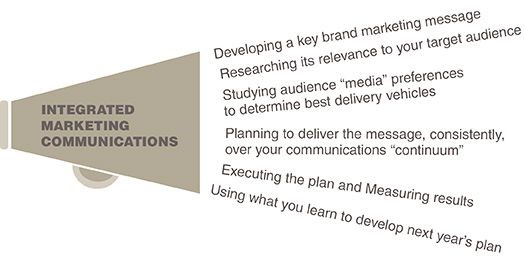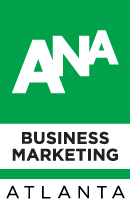
By Mark Semmelmayer
Chief Idea Officer
Pen & Inc. Marketing Communications
In conference rooms around the world, during the annual marketing budget process, someone in the room will seriously question the value of trade shows. They are expensive, consume man hours and are often difficult to detail in terms of ROI. In an age when anyone can learn everything about your product on a website … and contact you right then and there … are trade shows still meaningful?
I think the answer is, “it depends.” You need to decide what your ROI objectives are for a show. If you think a given show can meet or exceed them, then it should be a part of your marketing plan.
Fundamentally, the main purposes of trade shows are sales acceleration and building relationships with customers. Framing participation in these terms can help determine show value.
Let’s say the shows your company targets are “selling” shows, where you take orders from customers or distributors on the show floor. Provided sales more than offset costs, those shows are a critical component of your sales plan and earn an unequivocal “yes.”
If your target shows afford an opportunity to connect with end-users, especially those with buying influence, who you can’t often reach in direct sales, I think the answer on show value is also “yes.” But, it’s slightly trickier to track ROI, so the organization needs to agree on appropriate objectives and put measurement in place.
If some or all your shows don’t fit in these categories, examine your reasons for participation in terms of ROI. Just because competitors will be there doesn’t mean you have to be. Maybe reduced trade show spending means plowing more money back to the bottom line, or reducing price, putting competitors at a disadvantage. Better still, that money can be earmarked for communications efforts that have a better chance of influencing customers and providing solid ROI.
That said, I believe well chosen, planned and executed shows are still a powerful part of the marketing arsenal. But, the changing dynamics of a digital world call for changing strategies and tactics in making shows successful.
If you do chose to do a show, having a big booth in a good floor location isn’t enough. The show needs to be carefully planned and executed within an Integrated Marketing Communications (IMC) plan.

Anyone who’s previously read my views in this space knows I am an absolute proponent of IMC. If you’re not familiar with the concept, I’ll explain it as briefly as I can. IMC is the process of:
- Developing a key brand marketing message
- Researching its relevance to your target audience
- Studying audience “media” preferences to determine best delivery vehicles
- Planning to deliver the message, consistently, over your communications “continuum”
- Executing the plan
- Measuring results
- Using what you learn to develop next year’s plan
As a key piece of your IMC, trade show planning needs to be implemented the same way the overall MarComm plan is. You’re doing the show to attract visitors, promote your brand message and generate interest, inquiry and sales. Just because you build a stunning exhibit doesn’t mean they will come.
Encouraging meaningful booth traffic is the real challenge. It’s probably the toughest show strategy to develop. The problem? Information overload at every customer level.

Searching the web, I couldn’t get a consensus estimate of how many messages hit each of us every day, but the number is big. 200-300 ad messages and 100 emails read or sent in the typical working day seems a reasonable guess. Adding in the web’s and social media’s impact (in 2013, Facebook averaged 30,000,000 … yes, million … photos posted each day), you quickly reach a number that’s mind-numbing.
Our brains can’t handle that much information. Frankly, we won’t notice or even evaluate all that “stuff.” Instead, like a search in Word, we’ll skim through our daily “document” for things that connect with us. That’s what “breaking through the clutter” means … providing audiences with meaningful messages in a meaningful way … the key to building booth traffic! Some thought-starters:
- Does the show offer opportunities for sponsorship? If they do, sponsorship dollars go a long way in getting your “brand” seen/associated with the show by more people, a result of show managements’ pre-show activity, as well as in-hall signage and events.
- Does the show provide an email list of attendees or even last year’s attendees? If yes, use it.
- Ditto that for a snail mail list.
- Tell prospective attendees what value they’ll get from your booth (give-aways can help!).
- If possible, provide a way to set specific appointment times to meet with you.
- Offer in-booth programs. For instance, in professions requiring continuing education, an accredited CE session is a powerful offering.
- Personally contact key customers you know, or think, will be attending.
- Highlight show presence information in all messaging; ads, websites, etc.
- Consider creating a “virtual” booth on your website for preview, or where customers who can’t make the show can have an experience similar to attending.
- As social media becomes more powerful, utilize it every way you can. Twitter, LinkedIn and video messaging on Facebook or YouTube can be low cost/high reach vehicles.
- Create engaging, consistent brand messaging regarding the value of a visit for each of these media.
Another method of creating value is utilizing a show’s potential to provide “inbound” components for marketing efforts. Highlight daily booth activities in social media. Customers will often let you video/audio “tape” them (with the proper releases, of course) for testimonials or commentary, which provides highly credible content for social media, your website, newsletter or any other IMC element that can deploy it. You can conduct exit interviews to learn more about what visitors liked or didn’t and what they’d want more of at future shows. That information can create more value in upcoming trade show efforts.
Another value/cost reduction point; save the freight of shipping in massive amounts of collateral and samples. I’m convinced 99% of what attendees collect will see the inside of a hotel trash can, rather than the inside of a suitcase. Create/acquire an application that automatically scans their badge and sends PDFs of materials requested and/or triggers sending samples. As a bonus, you get an email/physical address database of people who displayed interest for sales followup.
The idea here wasn’t to create a primer on trade show planning and marketing. That would (and often does) fill a book. These are some thoughts about getting the most from trade shows in the digital age. Good planning and good luck!
Need more information?
Mark Semmelmayer
Chief Idea Officer
Pen & Inc. Marketing Communications
22843 Missy Drive
Marietta, GA 30062
770-354-4737
www.linkedin.com/in/marksemmelmayer/





